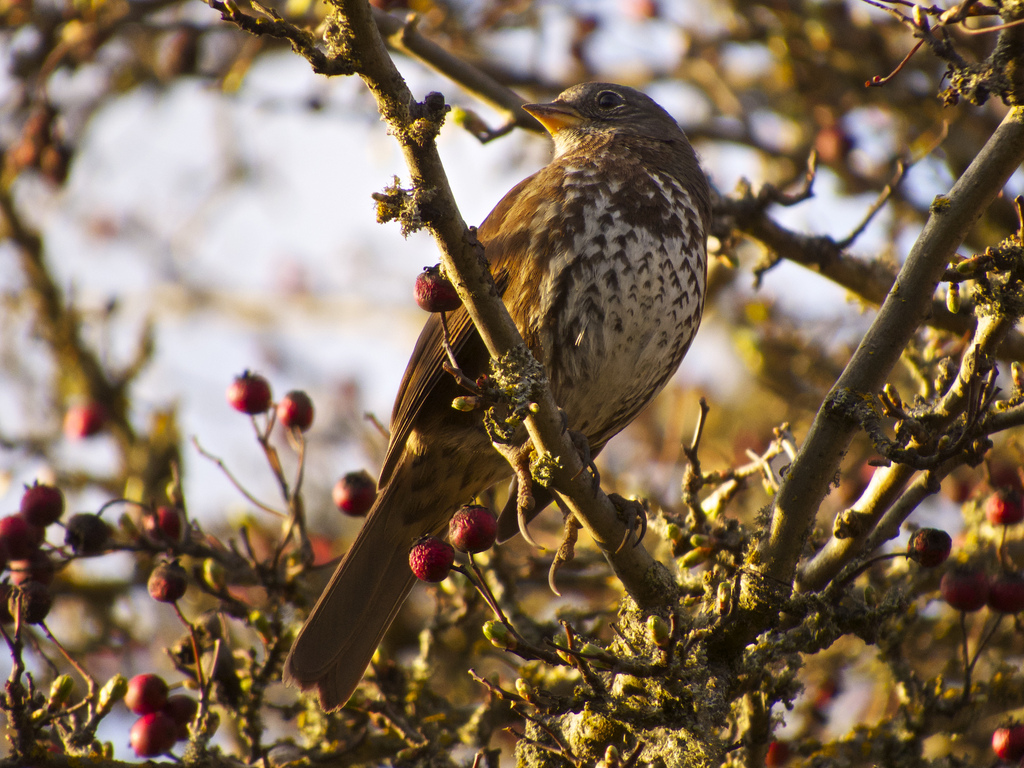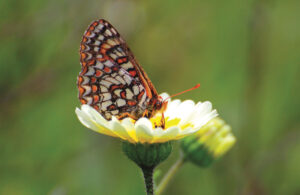This fall’s government shutdown left a two-week gap in Point Blue Conservation Science’s bird monitoring and banding data, the first such gap since Point Blue’s inception in the mid-1960s. But with the counts now in, the second half of October appears to have been a success, with researchers capturing and banding a surprisingly high number of birds — among them the mottled-brown, barrel-chested fox sparrow.
“We banded an unprecedented number of fox sparrows—four times higher than we have ever captured before,” said Tom Gardali, Point Blue’s Pacific Coast and Central Valley group director. “They were really amazing numbers.”
During 16 days of mist netting—a method used to capture birds in a net structure—at the Palomarin field station in October, researchers captured 379 fox sparrows out of a total of 532 birds of 34 species. The trend has continued through November on a slightly lesser scale, but with continued above average numbers—out of the 489 birds captured, 145 were fox sparrows.
While an increase in one species often means increased competition for other species, Gardali said it probably isn’t the case this time. Researchers captured relatively high numbers of several bird species, including those not affected by seasonal changes and found year-round at the field station.
“I’m inclined to think that there’s plenty of food for all of them,” he said. “And maybe the fox sparrows along with other species were here because there was so much food and highly favorable conditions.”

Gardali said there are several hypotheses, not mutually exclusive, that help explain the anomaly. His initial idea was that the breeding season located further north—from the Gulf of Alaska along the coast of British Columbia—was particularly successful, meaning that a greater number of younger birds were migrating south. But the data shows that while a large number of younger birds were captured, researchers also banded an above average number of adult fox sparrows.
Another hypothesis relates to the correlation between migratory species and the seasons—what happens in the winter will affect what happens in the summer. If an adult fox sparrow has a good winter—meaning they were able to gain substantial body fat—they will arrive at their winter breeding ground healthier and will breed earlier with a higher chance of reproductive success. This would then mean a greater number of birds migrating the following winter.
Gardali said he’s leaning toward an explanation that covers the high number of both juvenile and adult birds: a change in wintering ground distribution due to fox sparrows tracking resources such as food availability and better climate. For any number of reasons, food availability may have increased along the Central Coast, while cold, dry temperatures may have driven populations to seek an alternative overwintering site.
As climate change continues to bring about large scale environmental changes, Gardali said, the ability of a species to track resources such as food is becoming increasingly important. While some data describes changes in species distribution, such as the migration of small mammals to higher elevations in alpine habitat, Gardali said we need a better understanding of the ability of birds to track resources, even within a single season.
“Next year we might not see this at all because conditions are more favorable where the fox sparrows typically go,” he said. “It has huge consequences as to whether or not a species can survive this rapid environmental change.”





